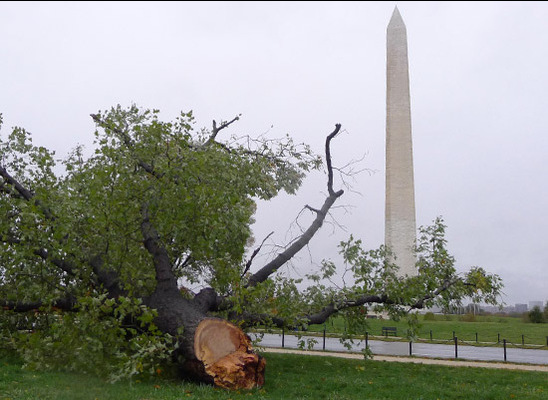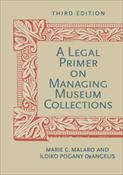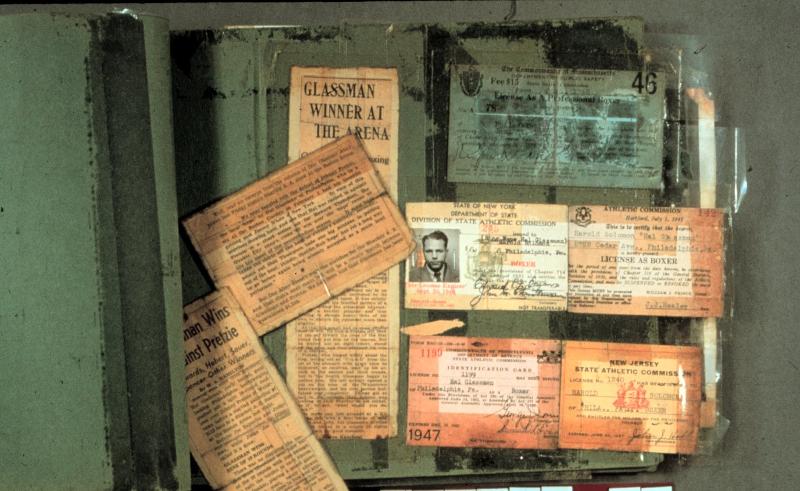|
Disasters and Regional Workshops
As the year winds up, 2012 had its share of disasters, following a trend of increasing climatic disasters from year to year.
The top 10 natural disasters worldwide are:
- Windstorms
- Floods
- Earthquakes
- Avalanches
- Extreme Temperatures
- Tsunamis
- Volcanic Eruptions
- Forest Fires
- Insect Swarms
- Asteroid Impacts
As disasters increase, response ideas and actions are refined and improved. Here are some of interesting projects and workshops:
New York City
Superstorm Sandy devastated New York City just before the holiday season commenced. This unexpected event had an enormous impact on the arts and culture of New York City and its surrounding area.
Alliance for Response NYC invites interested people to join them for "Community Based Recovery After Superstorm Sandy" at the Rubin Museum of Art, Theater on Friday, January 11, 2013 from 9:30 to 11:00 am. (Enter at 150 West 17th Street, between Sixth and Seventh Avenue). Let Rebecca Fifield (Rebecca.fifield@metmuseum.org) know that you plan to attend.
 |
| Superstorm
Sandy downs trees in
Washington, DC,
threatening National
landmarks. |
Alliance for Response, NYC is a local organization focused on connecting emergency responders with representatives of the cultural heritage community. Our goal is to strengthen mitigation and response capabilities through training exercises, development of local planning efforts and improved dialogue and partnerships. The organization is composed of staff from cultural institutions (security, facilities, health/safety, collections/conservation, and administration), first responders (NYPD, FDNY, OEM, FEMA) and related industries (insurance/risk management, recovery companies).
Australia
New research from Australia shows people with a strong connection to their community have better success in recovering from extreme weather events. The project analyzed individual and community resilience in four sites recovering from bushfire, drought, flood and cyclone.
"Recovery from Disaster: Resilience, Adaptability and Perceptions of Climate Change" summarizes a National Climate Change Adaptation Research Facility (NCCARF) study that showed having social relationships in the community and being financially comfortable increased recovery resiliency.
"The results showed that resilience is both an individual trait and a process," Dr. Boone, one of the study's authors, said. "The strongest direct predictor of resilience was adaptability and a sense of place."
"Successful recovery from disaster was influenced by financial capacity, family and neighbour support and how much people knew about climate change and how well they trusted public communication sources."
On February 7 and 8, 2013, Significance International will hold their annual Risk Management for Collecting Organizations Workshop at Burgmann College at the Australian National University in Canberra. For more information contact Veronica Bullock at info@significanceinternational.com
Greece
Northern States Conservation Center will be holding its first international workshop in Athens, Greece in June 14-15, 2013. This is the first time the cultural caretakers - librarians, archivists, archaeological site caretakers, and museum staff of Greece will have gathered to discuss disaster preparedness and response. The two day workshop will include one day of lectures in English and Greek and a second day of hands-on activities. More information on this workshop will be provided in future newsletters.
|
A Legal Primer on Managing Museum Collectionsby Marie C. Malaro, Idilko DeAngelis 
Hailed when it was first published in 1985 as the bible of U.S. collections management, A Legal Primer on Managing Museum Collections offers the only comprehensive discussion of the legal questions faced by museums regarding collections. This revised and expanded third edition addresses the many legal developments--including a comprehensive discussion of stolen art and the international movement of cultural property, recent developments in copyright, and the effects of burgeoning electronic uses--that have occurred during the past twenty-five years. An authoritative, go-to book for any museum professional, A Legal Primer on Managing Museum Collections offers detailed explanations of the law, suggestions for preventing legal problems, and numerous case studies of lawsuits involving museum collections. It is used as the textbook for our new online course MS266: Legal Issues in Collection Management.
A Legal Primer on Managing Museum Collections $ 47.95 |
|
Regional Workshops
Where you can find some of our instructors this year:
John Simmons
Care of Natural History Collections
- February 12, 2014, The Academy of Natural Sciences of Drexel University (Philadelphia, PA), $60
Steve Layne
Certified Institutional Protection Specialist/Supervisor
- February 4, 2013, Bowdoin College
Certified Institutional Protection Manager
- February 5, 2013, Bowdoin College, Brunswick, Maine
- February 17, 2013, Smithsonian's National Conference on Cultural Property Protection, Washington, DC
- March 10, 2013, The Midwest Security Conference, Lisle, IL
- May 18, 2013, AAM Annual Meeting, Baltimore, MD
IFCPP Conference
- August 3-7, 2013, San Diego, CA
Helen Alten
Disaster Preparedness Workshop
- June 14-15, 2013, Athens, Greece.
Collections Management and Practices
- July 11-12, 2013, Bryn Mawr College, Bryn Mawr, PA, $270 AASLH members/$345 nonmembers. $40 discount if fee received by June 5.
|
|
|
Welcome to the Collections Caretaker e-Newsletter from Northern States Conservation Center. The newsletter is designed to bring you timely and helpful content that is pertinent to situations we all encounter in our museum and archives work. Feel free to let us know what topics you would like to see featured in Collections Caretaker or even contribute an article.
|
|
Caring for Paper Collections
by Susan Duhl
It is remarkable the things people think of to 'fix' paper, only to make them worse. Pastels washed off in the bathtub, painted surfaces rubbed with glass cleaner, and images ripped off when removing window mats. My colleague once shrugged and joked:
it's what keeps us employed!
 |
| Tape
repairs stain
newspaper. |
You will find many resources on the internet that show you how to undertake treatments. While tempting, remember you should have hands-on training with a conservator before attempting any treatments, so you fully understand contingencies, potential problems, and liabilities. Examples of bad outcomes for do-it-yourself paper treatments include:
- spray applications of 'de-acidification' solutions, which can easily dissolve media and discolor paper;
- poor quality erasers and erasing techniques that either abrade paper surfaces or leave a harmful residue; and
- humidification and flattening, which can alter media or create physical stress resulting in tears, or other damages.
My aggravation is the do-it-yourself Internet advice - including cleaning paper using bread. That won't work. Commercial breads have ingredients, such as oils, that cause staining, and salt, that is abrasive. It is important to understand what you can do yourself and when you need to call a conservator.
When to Use a Conservator
There are limited things that can be done by non-conservators for paper, since the paper surfaces and many media are extremely susceptible to damage. I once got a panicked phone call from a curator who mistakenly removed important information by erasing unseen cartographer's pencil lines during surface cleaning (erasing) dirt from a printed map.
One of the most frustrating calls I received was from an untrained restorer who immersed a George Washington document on vellum sheepskin in a water bath. Skins can't tolerate water and an important document worth $10,000.00 was a total loss.
Professional conservators are trained in art history, studio art, and organic chemistry. They are material scientists who specialize in paper and have a complete understanding of how it was made and how it deteriorates. They understand how art and artifacts are manufactured, age and deteriorate as a function of their composition; how they interact with their environment; and how use and handling affect long-term preservation.
Learning how to work with conservators, and knowing the services they offer, and the cost of those services, help you understand what can be done to care for your collection Since conservators are not licensed or regulated, you must be a wise consumer of their services and know what are safe and ethical treatments. Because conservators use terms to describe conditions and treatments, which may be unfamiliar to you, you should learn these terms and understand how the conservator approaches problems found in an artifact. Much of this comes from experience. Start by reading the American Institute for Conservation's "How to Choose a Conservator" pamphlet.
Condition Reports
Items with problems to their structure and media must be carefully examined and documented to determine if the work can be safely exhibited or traveled. Treatment of sensitive paper-based works is often necessary for preservation of a document: without treatment most paper damage causes permanent loss.
Before any treatment begins, detailed examination must occur. A condition report records details of damage as well as details of construction, allowing a caretaker and conservator to make a thoughtful determination of treatment and care needs for the piece.
Condition reports can be generated by a curator, librarian, or collections manager as well as a conservator. Regularly complete condition reports for every work on paper, especially for high value and/or unique artwork, and for those going on, or coming off, of exhibit. Archival collections of documents, and sometimes groups of prints may have a single condition report.
- When the item is accessioned, complete its first examination and condition report. After that, regular examinations and updated reports occur prior to loans, exhibition, or on a regular schedule as part of the annual work plan.
- Regular condition reports identify new damage and help staff determine the rate of deterioration.
- Examinations are especially important prior to loaning works on paper to another institution.
You should be alert to the following condition problems:
- Any works compromised by poor quality framing, damaging mounts, tape attachments, water damage, mold, rips and tears.
- Media compromised by staining, smudging, flaking, or other insecurities
Collections cataloging database programs include a 'condition' field designed to enter information on the physical conditions of the art or artifact. Use consistent terminology to ensure that damage is reported in an easy to categorize manner.
Treatment Priority Categories
After completing a condition assessment, assigning a treatment priority to the art or artifact helps determine how to allocate limited resources of staff time, conservation treatment money and storage supplies.
Priority #1 - Urgent Need of Conservation
These materials are in immediate need of conservation treatment for their preservation and to stop further damage. This category includes objects with:
- Extremely deteriorated, brittle, and/or fragile paper supports, mounts, or backings;
- Active mold and/or mildew;
- Insecure media that exhibits friability, active flaking, and/or blind cleavage;
- Objects damaged in a disaster such as a fire or flood.
Priority #2 - Serious But Not Urgent Need of Conservation
These materials are in danger of further deterioration and/or damage and their long-term preservation will be seriously compromised if they are not treated promptly. This category includes objects with:
- Papers that are brittle, have extensive tears, or insecure mounts;
- Papers with poor quality or inappropriate adhesives, and/or tapes that are deteriorating and staining the paper;
- Books with broken bindings, missing covers, and detached text blocks or pages.
Priority #3 - Requires Treatment for Long-term Preservation
Conservation treatment will improve the long-term preservation of paper objects but treatment may not be immediately required. This category includes objects with:
Papers that are moderately discolored and deteriorated;
Papers with moderate tears;
Papers with water-soluble tapes, or mounts that are not causing extensive staining or deterioration;
Abraded and/or acidic surface;
Books with weak bindings or detached boards.
Priority #4 - Requires Treatment for Exhibition Purposes
These materials can usually be stabilized by proper enclosures and storage conditions but may require some stabilizing treatment if they are to be exhibited. This category includes objects with:
- Folded, creased, or cockled papers;
- Visually disturbing stains;
- Cosmetic requirements, such as paper inserts or media compensation.
Priority #5 - Good condition
- These materials are in stable condition and do not require conservation treatment.
Preventative Care
Preventative care is the best thing that can be done for the short- and long-term preservation of works of art on paper. Proper housing and handling is the greatest contribution a collections manager can make to the preservation of paper-based collections. Paper can last indefinitely with proper care and maintenance.
Excerpt from MS228: Care of Paper Artifacts.
Susan Duhl, is an Art Conservator in private practice specializing in art on paper and archival collections. She teaches MS228: Care of Paper Artifacts, MS233: Matting and Framing, and MS234: Archives Management: Physical Care. She provides workshops, preservation consultations and conservation treatment to institutions and private individuals throughout the world. Susan treats works on paper, including prints, watercolors, drawings, wallpaper, documents, and 3-dimensional paper objects. Her work includes disaster response and recovery, consultations and collection surveys to determine condition, treatment and long-term care recommendations, and helping clients prioritize treatment needs. She is a Professional Associate of the American Institute for Conservation of Historic & Artistic Works (AIC) and founding member of the Art Conservators Alliance, www.ArtConservatorsAlliance.com
|
|
Grant Deadlines
Heritage Preservation Conservation Assessment Program
Deadline: Extended to January 15
Eligible organizations: US nonprofit museums and units of state, local, and tribal governments
Heritage Preservation's Conservation Assessment Program (CAP) provides a general conservation assessment of a museum's collection, environmental conditions, and site. Professionals spend two days on-site and three days writing a report that identifies the institution's
conservation priorities, aids in developing strategies for improved collections care, and provides a tool for long-term planning and fundraising. Please note: For museums that sustained damage during Hurricane Sandy, CAP is available to conduct immediate emergency assessments. Northern States Conservation Center has CAP-approved assessors on staff. Visit Heritage Preservation's CAP page for complete guidelines and application. IMLS Museums for America
Deadline: January 15
Eligible organizations: US nonprofit organizations and units of state and local government
Conservation treatment funding, which formerly fell under IMLS Conservation Project Support, has been moved to IMLS Museums for America, Collections Stewardship category. The goal of the Institute of Museum and Library Services (IMLS) Museums for America program is to strengthen the ability of an individual museum to serve the public more effectively by supporting high-priority activities that advance its mission, plans, and strategic goals and objectives. Funding in the Collections Stewardship category may support documentation, preservation, and conservation of tangible and digital collections; grants range from $5,000 to $150,000 and require a match of one to one. Northern States Conservation Center offers free grant application support for projects that involve significant work by NSCC. For assistance with your Museums for America application, contact NSCC Director Helen Alten at 651-659-9420 or helen@collectioncare.org.
|
Northern States Conservation Center (NSCC) provides training, collection care, preservation and conservation treatment services. NSCC offers online museum studies classes at www.museumclasses.org in Collections Management & Care, Museum Administration & Management, Exhibit Practices and Museum Facilities Management.
Sincerely,
Helen Alten, DirectorBrad Bredehoft, Sales and Technology Manager
|
|
|
|
|
|
|



